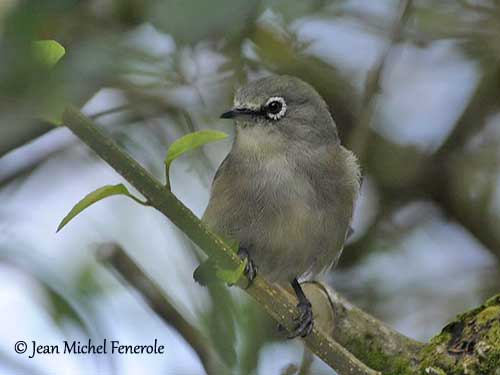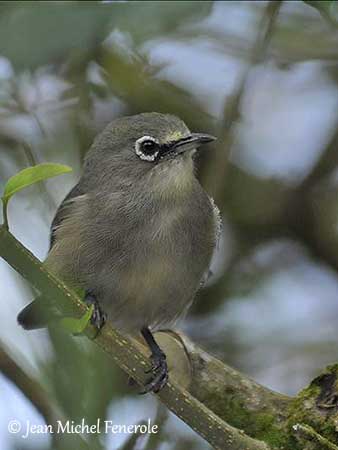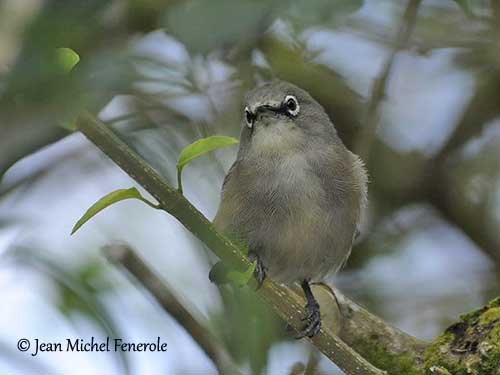
Fr: Zostérops des Seychelles
Ang: Seychelles White-eye
All: Mahebrillenvogel
Esp: Anteojitos de Seychelles
Ita: Occhialino delle Seychelles
Nd: Mahébrilvogel
Sd: mahéglasögonfågel
Photographer:
Jean Michel Fenerole
Photos d’Oiseaux du monde
Text by Nicole Bouglouan
Sources:
HANDBOOK OF THE BIRDS OF THE WORLD Vol 13 by Josep del Hoyo-Andrew Elliot-Jordi Sargatal - Lynx Edicions – ISBN: 9788496553453
Birds of Seychelles – By Adrian Skerrett and Tony Disley – Editeur: A&C Black, 2013 – ISBN: 140818124X, 9781408181249 – 176 pages
Endangered Wildlife and Plants of the World, Volume 12 Par Marshall Cavendish Corporation – Editeur: Marshall Cavendish, 2001 – ISBN: 0761472061, 9780761472063 – 1872 pages
Wikipedia, the free encyclopaedia
NATURE Seychelles - Seychelles White-eye
North Island Seychelles - Seychelles White-eye 2016 Census
Birds of the World - Seychelles white-eye
The future is looking brighter for the Seychelles white-eye - one of the Seychelles' rarest birds
Savoy Seychelles Blog - Seychelles White-eye
Home page
Page Passeriforme Order
Seychelles White-eye
Zosterops modestus
Passeriformes Order – Zosteropidae Family
INTRODUCTION:
The Seychelles White-eye is endemic to the Seychelles where it has reduced range and small population.
The species was thought to be extinct for 25 years. But in 1960, a small population was rediscovered on Mahé, and thanks to conservation measures, the species is making a comeback across several islands. It is classified as Vulnerable since 2016, and scientists hope that it will make a full recovery, but probably a slow one.
The Seychelles White-eye is a small bird with conspicuous white eyering and typical long, tubular, slightly curved, brush-tipped tongue. This is an adaptation for feeding on nectar and pollen. This species is a co-operative breeder with helpers contributing to nesting duties, but the system is complex. It frequents a wide variety of habitats from wooded country to open woodland and gardens.
The genus Zosterops seems to be the most “primitive” with several species very close to the ancestral forms of the family.
DESCRIPTION OF THE BIRD:
Biometrics:
Length: 10-11 cm
Weight: 11,5 – 13 g
The Seychelles White-eye has dark olive-grey to brown head, upperparts and tail, but the rump is slightly paler and tinged yellowish.
On the pale grey underparts, the throat appears dull ochre/yellowish, whereas belly is washed yellowish and there is a brownish tinge on flanks.
On the head, the broad, white eyering is broken in front of the eye. Lores are blackish, with pale grey band from eye to eye, just above the bill base.
The pointed bill is black. The eyes are dark reddish-brown. Legs and feet are dark grey.

Male and female have similar plumage, but the female is slightly larger than male.
The juvenile resembles adult but it has yellow bill at first, changing gradually to grey with age.
RANGE:
The Seychelles White-eye is found on Inner islands of Seychelles, (Mahé and adjacent Conception) in NE Seychelles. The species was introduced on Frégate Island, North Island and Cousine Island.
HABITAT:
The Seychelles White-eye frequents forests, scrubs and gardens. It is found in well-wooded country, mixed secondary forest with tall trees and underlying or adjacent scrub layer, open woodlands and gardens.
On Mahé, the species occurs mainly at 300-500 metres, but it is present at all elevations on Conception.
CALLS AND SONGS: SOUNDS BY XENO-CANTO
The Seychelles White-eye gives low, soft “cheer-cheer” and ‘tik-tik” as contact calls. The alarm call is a loud “chewick” and also a chattering trill.
The melodious song is given from perch and mostly heard at dawn. However, during the breeding season, it can be heard throughout the day. It includes variable complex sequences of high-pitched notes.
BEHAVIOUR IN THE WILD:
The Seychelles White-eye feeds primarily on insects such as ants, aphids, mealy bugs (Pseudococcus), small green caterpillars and crickets. It also takes spiders, and consumes fruit, berries, nectar and seeds.
It forages below the canopies of tall trees and is difficult to observe. It can be seen in scrub layer of secondary growth, but also at top of a variety of both native and exotic tree species.
It probes into bark crevices and gleans insects from leaves.
During the breeding season, some displays are reported prior to copulation. The male has been observed pecking at the female’s white eyering prior to copulation. Other typical display of Zosteropidae include wing-whirring by female usually followed by copulation. The male preens female’s neck and cheek, and hops around her before mating.
The Seychelles White-eye is a co-operative breeder. It has complex system with large nesting groups in the same territory. The helpers contribute to other nests within the group and the territory, but also to nests outside their own territory.
The Seychelles White-eye performs short movements on Mahé.
The wings are short and rounded and the flight is weak and undulating.

REPRODUCTION OF THIS SPECIES:
The breeding season takes place between October and April.
The very peculiar social organisation of this co-operative breeder involve nesting groups within the same territory, but the composition of these groups constantly changes, and some birds also contribute to nests in other territories.
The nest is a flimsy cup made with grass, strips of bark, dead leaves, rootlets and moss. This structure is attached to 2-4 sticks by spider web. The nest is placed between 4 and 20 metres above the ground, usually in dense cluster of leaves, towards the end of an almost horizontal branch.
In groups with only one female, the clutch contains 1-2 pale greenish-blue eggs with indistinct darker markings.
However, from an observation on Conception Island, a large nesting family of 8 individuals had 7 eggs in the same nest.
The incubation lasts 13-15 days, and the young fledge 11-15 days after hatching.
PROTECTION / THREATS / STATUS:
The Seychelles White-eye has restricted range on five islands in the Seychelles. The loss of native vegetation, mainly the large trees, may have been a cause of the decline of this species. On Mahé, the habitat is still invaded by alien plants. Nest predation by introduced Black rats but also Common Myna, and Seychelles Bulbul is a big threat on Mahé.
However, thanks to conservation efforts, the population trend is increasing. The global population is roughly estimated to number 330/430 mature individuals, and placed in the band 250/999 mature individuals (2013).
The Seychelles White-eye is currently listed as Vulnerable, but with restoration programmes continuing, it is hoped the population will continue to recover.
